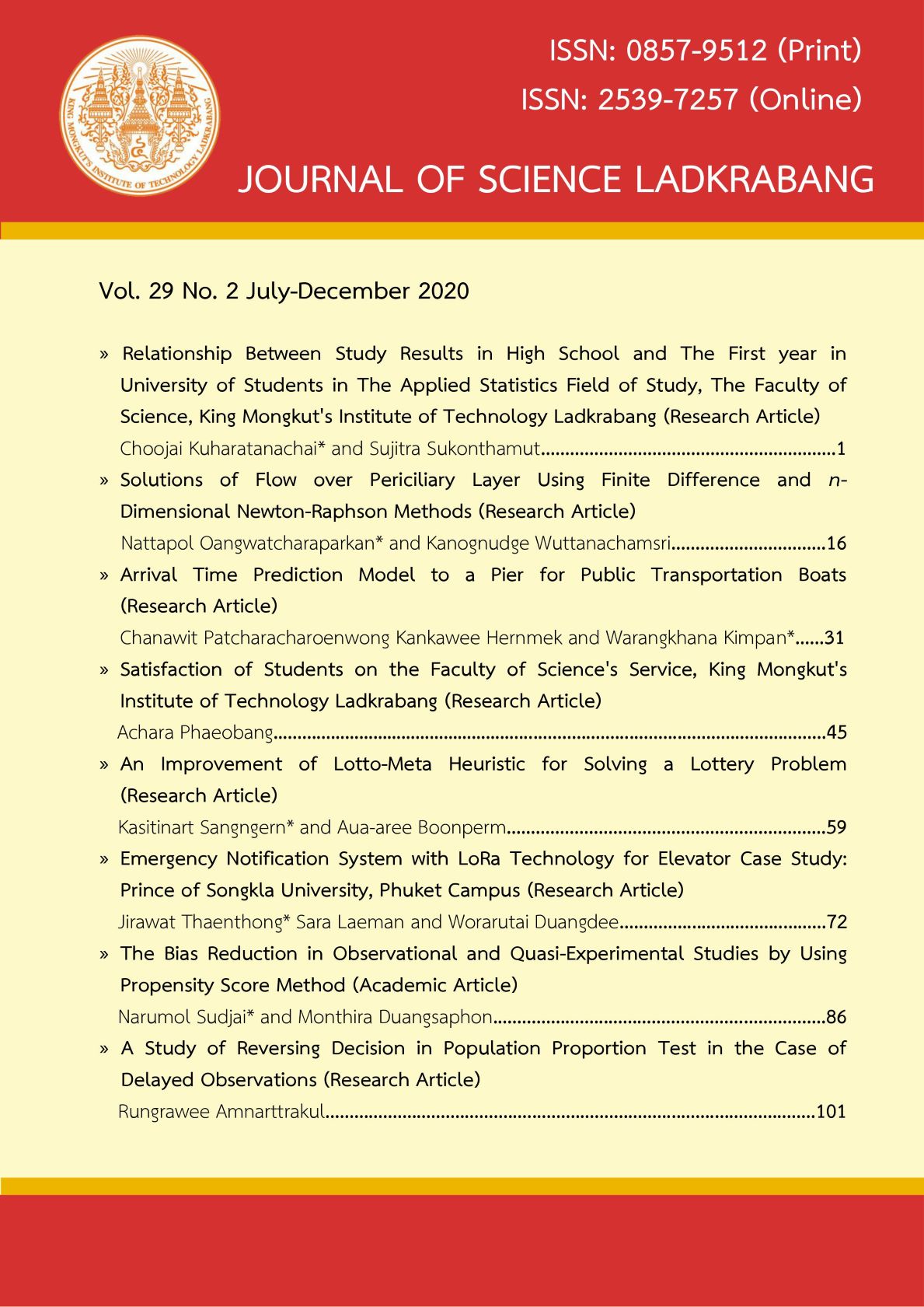The Bias Reduction in Observational and Quasi-Experimental Studies by Using Propensity Score Method
Main Article Content
Abstract
Selection bias is particular problem in observational and quasi-experimental studies, which it gives rise to noncomparability between treated and non-treated (or control) groups. To remedy the effect of selection bias, many statistical methods have been proposed such as stratified analysis, multivariate analysis, and propensity score. Propensity score method was widely used to reduce this problem. Propensity score is defined as the probability of a subject to receive a treatment conditional on the confounding factors (covariates) and then provides to balance the covariates between the treated and control groups by using propensity score. After that we can be compared the outcome in two groups by using appropriate statistical tests for the data. In this article, we describe a basic principle of the propensity score and illustrate the uses through applied example in previous study.
Article Details
References
Schulz, K. and Grimes, D. 2019. Essential concepts in clinical research. Randomised controlled trials and observational epidemiology. 2nd ed, Sydney: Elsevier, China.
Hanzlik, S., Mahabir, R.C., Baynosa, R.C. and Khiabani, K.T. 2009. Levels of evidence in research published in The Journal of Bone and Joint Surgery (American Volume) over the last thirty years. J Bone Joint Surg Am, 91(2), 425-428.
Cunningham, B.P., Harmsen, S., Kweon, C., Patterson, J., Waldrop, R., McLaren, A., and McLemore, R. 2013. Have levels of evidence improved the quality of orthopaedic research?. Clin Orthop Relat Res, 471(11), 3679-3686.
Parsa, A. and Ebrahimzadeh, M. H. 2017. Level of Evidence in the Archivs of Bone and Joint Surgery Journal. Arch Bone Jt Surg, 5(6), 347-350.
Rosenbaum, P.R. and Rubin, D.B. 1983. The central role of the propensity score in observational studies for causal effects. Biometrika, 70(1), 41-55.
Yao, X.I., Wang, X., Speicher, P.J., Hwang, E.S., Cheng, P., Harpole, D.H., Berry, M.F., Schrag, D. and Pang, H.H. 2017. Reporting and Guidelines in Propensity Score Analysis: A Systematic Review of Cancer and Cancer Surgical Studies. J Natl Cancer Inst, 109(8), djw323, doi: 10.1093/jnci/djw323 (1-9).
Borah, B. J., Moriarty, J. P., Crown, W. H. and Doshi, J. A. 2014. Applications of propensity score methods in observational comparative effectiveness and safety research: where have we come and where should we go?. J Comp Eff Res, 3(1), 63-78.
Austin, P. C. 2009. Balance diagnostics for comparing the distribution of baseline covariates between treatment groups in propensity-score matched samples. Stat Med, 28(25), 3083-3107.
Benedetto, U., Head, S. J., Angelini, G. D. and Blackstone, E. H. 2018. Statistical primer: propensity score matching and its alternatives. Eur J Cardiothorac Surg, 53(6), 1112-1117.
Austin, P. C. 2011. An Introduction to Propensity Score Methods for Reducing the Effects of Confounding in Observational Studies. Multivariate Behav Res, 46(3), 399-424.
Rosenbaum, P. R. 1987. Model-Based Direct Adjustment. Journal of the American Statistical Association, 82(398), 387-394.
Fukuda, T., Imai, S., Nakadera, M., Wagatsuma, Y. and Horiguchi, H. 2018. Postoperative daily living activities of geriatric patients administered general or spinal anesthesia for hip fracture surgery: A retrospective cohort study. J Orthop Surg (Hong Kong), 26(1), 2309499017754106, doi: 10.1177/2309499017754106 (1-9).
Lim, W. S. R., Liow, M. H. L., Rikhraj, I. S., Goh, G. S. and Koo, K. 2019. The effect of gender in hallux valgus surgery. A Propensity score matched study. Foot Ankle Surg, 25, 670-673.
Guo, J., Wang, Z., Fu, M., Di, J., Zha, J., Liu, J., Zhang, G., Wang, Q., Chen, H., Tang, P., Hou, Z. and Zhang, Y. 2020. Super elderly patients with intertrochanteric fractures do not predict worse outcomes and higher mortality than elderly patients: a propensity score matched analysis. Aging, 12(13), 13583–13593.

